Seagate Technology stands as a prominent figure in the world of data storage, epitomizing innovation and reliability in the hard drive market. Founded in 1979, Seagate has been a pioneer in the development of hard drives, continuously pushing the boundaries of storage capacity, speed, and durability. As a leading manufacturer, the company has played a crucial role in shaping the landscape of digital storage solutions, offering a diverse range of products that cater to a wide array of computing needs.
The importance of hard drive technology in the realm of modern computing cannot be overstated. Hard drives serve as the backbone of data storage, acting as the primary means of preserving valuable information in personal computers, enterprise servers, and various consumer electronics. In an era where data generation and consumption grow exponentially, hard drives provide the essential capacity to store everything from everyday documents to large-scale, complex databases. This technology has evolved remarkably over the years, adapting to meet the ever-increasing demands for higher storage capabilities and faster access speeds, thus playing a pivotal role in the advancement of computing technology and the management of the digital world’s burgeoning data requirements.
As we delve deeper into the intricacies of Seagate’s contributions and the evolving landscape of hard drive technology, it becomes clear that understanding the dynamics of this field is key to appreciating the underpinnings of modern digital infrastructure.
History and Development of Seagate Hard Drives
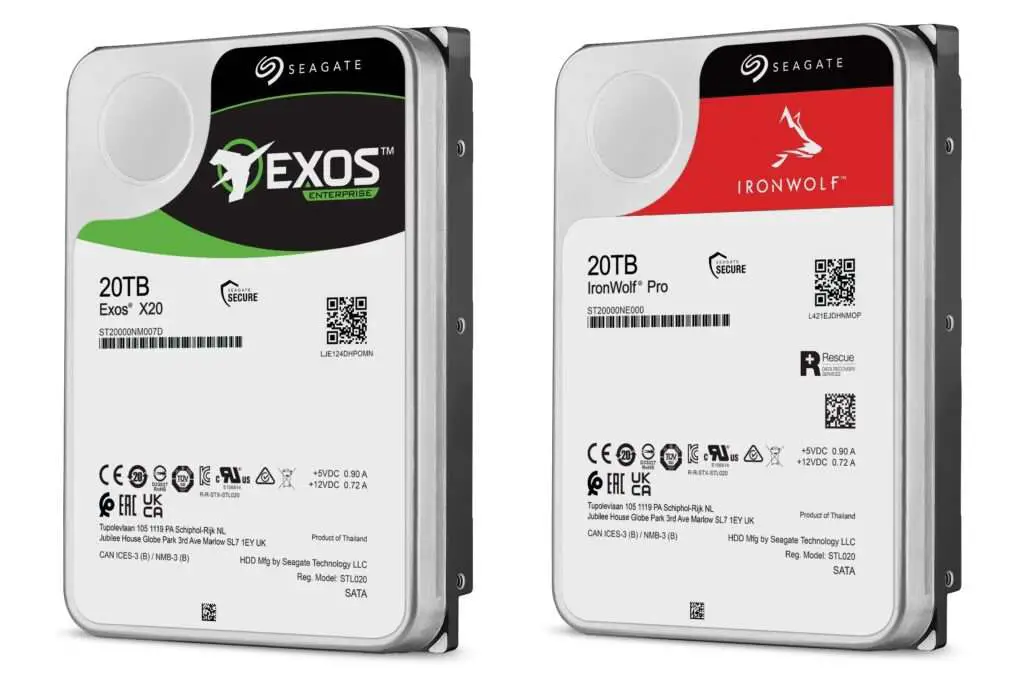
The Inception of Seagate
Seagate Technology, founded in 1979 by Alan Shugart and Finis Conner, marked its entry into the data storage industry during a time when the personal computing revolution was just beginning to take shape. The company’s establishment was a response to the burgeoning need for reliable, high-capacity storage solutions, which were becoming increasingly vital in the computing world.
Early Milestones and Innovations
Seagate quickly distinguished itself with the introduction of the ST-506, the first 5.25-inch hard disk drive, in 1980. This product, capable of storing 5 megabytes of data, was a significant innovation, setting a new standard for personal computer storage. It was not only more compact than its predecessors but also offered better integration with the then-emerging desktop computers.
Advancements in Storage Capacity
Over the years, Seagate consistently pushed the envelope in enhancing storage capacity. In 1992, it released the first 7200 RPM hard drive, the Barracuda, a landmark in hard drive speed and reliability. This model set the foundation for future high-performance drives, making Seagate a go-to brand for both personal and enterprise-level storage solutions.
Pioneering New Technologies
Seagate has been at the forefront of introducing groundbreaking technologies. The company pioneered the use of perpendicular recording technology in 2006, which significantly increased the data density of their drives. This innovation allowed for a dramatic expansion in storage capacity, meeting the growing demands of data-intensive applications.
Expansion into Hybrid and Solid-State Drives
Recognizing the shift towards faster and more efficient storage solutions, Seagate ventured into the realm of solid-state drives (SSDs) and hybrid drives. In 2013, Seagate launched its first solid-state hybrid drive (SSHD), which combined the high capacity of a traditional hard drive with the speed of an SSD. This hybrid approach offered an optimal balance of performance, capacity, and cost, appealing to a broad range of users.
Seagate Today
Today, Seagate continues to be a key player in the data storage industry, adapting to the changing needs of consumers and enterprises alike. With a focus on innovation, the company is dedicated to providing cutting-edge storage solutions that address the challenges of modern data management and the ever-evolving landscape of technology.
Seagate’s journey from its early days to its current status as a leader in data storage exemplifies a relentless pursuit of technological advancement and a deep understanding of the evolving needs of digital storage.
Product Lines and Technological Features
Diverse Range of Hard Drives
Seagate’s product portfolio spans a wide range of hard drives, each tailored to meet specific user needs. From personal computing to enterprise data centers, their lineup includes desktop drives, laptop drives, network-attached storage (NAS) drives, and surveillance-focused drives.
Barracuda: The Versatile Mainstream Drive

The Barracuda series, one of Seagate’s most popular, is renowned for its versatility. Designed for desktop and all-in-one PCs, Barracuda drives offer a balance of speed and storage capacity, making them suitable for a wide range of applications. With capacities up to 8TB, these drives cater to everyday computing needs while also providing ample space for multimedia files and applications.
IronWolf: Optimized for NAS
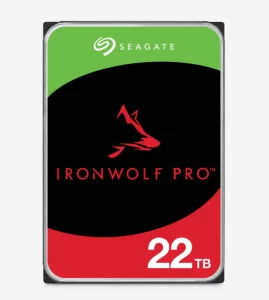
The IronWolf series is specifically designed for NAS systems. These drives feature AgileArray technology, which enhances drive performance in multi-drive NAS environments. With support for workloads up to 180TB/year and capacities up to 18TB, IronWolf drives are ideal for both home and small to medium-sized business environments.
SkyHawk: Tailored for Surveillance
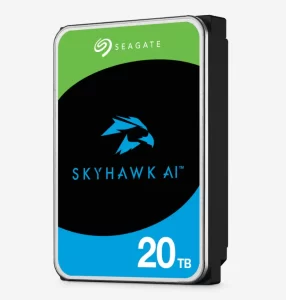
SkyHawk drives are engineered for surveillance systems. They are built to record data 24/7 from multiple camera streams, with capacities up to 16TB. SkyHawk drives feature ImagePerfect firmware, which minimizes dropped frames and downtime, ensuring reliable performance in security systems.
Exos: The Enterprise Solution
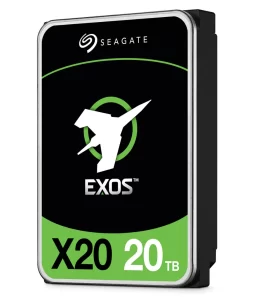
For enterprise-level applications, Seagate offers the Exos series. These high-capacity drives are built for bulk data applications and multi-bay NAS and server environments. With advanced caching technology, they deliver high performance for critical data center applications.
FireCuda: The Hybrid Advantage
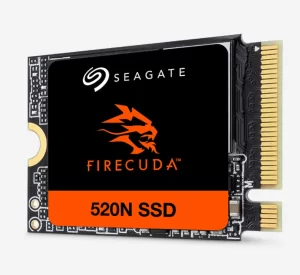
The FireCuda series combines the traditional hard drive technology with solid-state features. FireCuda SSHDs offer faster load times for gaming and high-performance applications compared to standard HDDs. By blending SSD technology with HDD capacity, FireCuda drives provide a cost-effective solution for users seeking performance and storage space.
Technological Features Across the Board
Across all product lines, Seagate hard drives incorporate advanced features such as Multi-Tier Caching Technology (MTC) and Instant Secure Erase (ISE). MTC enhances data read and write speeds, while ISE allows for safe and easy drive disposal or repurposing. The consistent focus on technological innovation ensures that Seagate drives are not just about storage capacity, but also about delivering performance, reliability, and efficiency.
Seagate’s diverse range of hard drives demonstrates their commitment to providing storage solutions that cater to the varying needs of their user base. By continuously advancing their technology, Seagate maintains its position as a leader in the data storage industry.
Market Performance and User Feedback
Strong Market Presence
Seagate has established itself as a dominant player in the hard drive market. The company’s consistent innovation and wide-ranging product offerings have contributed to its significant market share. Seagate’s financial reports often reflect strong sales figures, underlining its success in the competitive storage market. These figures are indicative of the company’s ability to adapt to market trends and consumer needs.
Competitive Positioning
In the global hard drive market, Seagate competes closely with other major manufacturers. Their ability to maintain a significant market share amidst fierce competition is a testament to the brand’s strength and consumer trust. This competitive edge is maintained through continuous technological advancements and by offering products that cater to a broad spectrum of storage requirements.
User Feedback: A Mixed Bag
User feedback on Seagate hard drives presents a mixed picture. On one hand, many users praise the drives for their reliability, storage capacity, and value for money. Seagate’s drives are often highlighted in reviews for their robust performance in various settings, from personal computing to more demanding enterprise environments.
Criticisms and Concerns
However, like any major brand, Seagate has faced its share of criticisms. Some users have reported issues related to drive failure rates and longevity, especially in specific models or batches. This feedback is valuable for Seagate, as it provides insight into areas where improvements can be made.
Responding to Feedback
Seagate appears to be responsive to customer feedback, using it to drive improvements in their products. The company’s willingness to engage with customer concerns and continually refine their product line demonstrates their commitment to customer satisfaction.
Balancing Quality and Affordability
Seagate’s challenge lies in balancing quality with affordability, a common struggle in the tech industry. While they strive to offer cost-effective solutions, maintaining high standards of quality and reliability is paramount to their continued success and customer loyalty.
The market performance and user feedback for Seagate hard drives paint a picture of a company that has solidified its place in the market while facing the usual challenges of technology manufacturing. Their ability to adapt and respond to consumer needs and feedback will be crucial in maintaining their position in the evolving storage market.
Comparison with Competitors
Rivals in the Storage Arena
Seagate’s main competition in the hard drive market comes from other industry giants, notably Western Digital (WD). Both companies have a long history in the industry and have developed a range of products that target similar segments of the market.
Price Comparison
When it comes to pricing, Seagate often positions its products to be more budget-friendly compared to similar offerings from competitors like Western Digital. This pricing strategy makes Seagate drives an attractive option for consumers who are looking for a balance between cost and performance.
Performance Face-off
Performance is a critical aspect where Seagate and its competitors are constantly trying to outdo each other. While Seagate drives are recognized for their reliable performance in general computing tasks, WD drives are often preferred in scenarios requiring high endurance and intensive data writing, such as in NAS setups. This difference in performance characteristics can influence consumer choice depending on their specific needs.
Reliability and Durability
In terms of reliability, the competition is intense. Seagate has had instances of specific models with higher failure rates, a concern echoed in user reviews and independent studies. However, it’s important to note that these issues are not consistent across all Seagate products. Similarly, Western Digital has faced its own challenges with reliability in certain models.
Innovation and Technology
Both Seagate and Western Digital invest heavily in research and development to bring innovative technologies to their products. Seagate’s use of perpendicular recording technology and its development of hybrid drives showcase its commitment to innovation. Similarly, Western Digital has made significant strides in developing high-capacity and energy-efficient drives.
Customer Loyalty and Brand Perception
Brand loyalty plays a significant role in the competition. Seagate has built a loyal customer base over the years, thanks to its broad product range that caters to various segments, from entry-level to high-end users. Western Digital, on the other hand, has its own strong following, particularly among users with specific performance or durability requirements.
Overall Market Position
While each brand has its strengths and weaknesses, Seagate holds its own in a highly competitive market by offering a diverse range of reliable and affordable storage solutions. The competition with Western Digital and other manufacturers drives continual improvements in technology, benefiting consumers with better and more innovative storage options.
The comparison between Seagate and its competitors reveals a competitive landscape where pricing, performance, and reliability are key factors influencing consumer preference. Seagate’s ability to balance these aspects has been crucial in maintaining its position as a leading player in the hard drive market.
Seagate’s Data Recovery Technology and Services
Pioneering Data Recovery Solutions
Seagate has established itself not just as a provider of storage solutions, but also as a leader in data recovery services. Understanding the critical nature of data loss, Seagate offers specialized data recovery technologies and services, designed to assist customers in retrieving valuable data from damaged or failed drives.
The Rescue Data Recovery Services

Seagate’s Rescue Data Recovery Services are a key differentiator, offering peace of mind to consumers and businesses alike. This service, often included with their premium drives or available as an add-on, provides professional data recovery in cases of mechanical failure, accidental damage, or data corruption.
Importance in Consumer Choice
The availability of data recovery services is a significant factor in the decision-making process for many users. Knowing that a safety net exists in the event of data loss can be a decisive factor for customers, especially for those storing critical or sensitive data. This service is particularly appealing in enterprise or professional settings, where data loss can have serious implications.
Advanced Recovery Techniques
Seagate employs a range of advanced techniques in its data recovery process. These include cleanroom environments for physical drive repairs and sophisticated software for retrieving lost or corrupted data. The company’s expertise in understanding its own drive architectures gives it an edge in recovering data from Seagate drives.
Success Rates and Limitations
While Seagate boasts high success rates in data recovery, it’s important to acknowledge that not all data loss scenarios can be resolved. The effectiveness of recovery efforts can depend on the extent and nature of the drive damage. However, Seagate’s transparent approach in assessing and handling data recovery cases builds trust among its users.
Building Consumer Trust
Offering reliable data recovery services helps Seagate in building and maintaining consumer trust. Users are more likely to invest in a brand that not only provides quality storage solutions but also supports them in times of unexpected data loss. This trust is crucial in a market where brand loyalty significantly influences consumer behavior.
A Competitive Edge
Providing robust data recovery services gives Seagate a competitive edge in the storage market. It highlights the company’s commitment to comprehensive customer care, extending beyond the mere sale of hard drives. This approach reflects an understanding of the holistic needs of users, from data storage to data recovery.
Seagate’s focus on data recovery technology and services underscores its recognition of the critical importance of data in today’s digital age. By offering these services, Seagate not only enhances its product value but also strengthens its customer relationships, a key aspect in the competitive landscape of data storage solutions.
Seagate Hard Drives and the Cloud Computing Connection
Adapting to Cloud Storage Demands
As cloud computing continues to revolutionize data storage and management, Seagate has been proactive in adapting its products and strategies to align with this shift. The company recognizes the growing demand for cloud-compatible storage solutions and has been evolving its product line to meet these needs.
High-Capacity Drives for Cloud Data Centers
Seagate’s response to the cloud computing boom includes developing high-capacity hard drives specifically designed for data centers and cloud storage applications. These drives are engineered to handle the intensive workloads and continuous operation typical in cloud environments. They offer enhanced durability and reliability, features crucial for cloud-based applications.
Impact of Cloud Trends on Traditional Hard Drives
The rise of cloud storage has had a profound impact on the traditional hard drive market. As more businesses and consumers opt for cloud-based storage solutions, the demand for traditional consumer-level hard drives has seen a shift. This trend compels companies like Seagate to innovate and diversify their product offerings.
Balancing Cloud and Local Storage Needs
Seagate understands that despite the growth of cloud storage, there remains a significant market for local storage solutions. The company continues to develop hard drives for personal and enterprise use, acknowledging that a hybrid approach to data storage – combining cloud and local storage – is often the most practical solution.
Enhancing Cloud Data Security
With the increase in cloud storage usage, data security has become a paramount concern. Seagate invests in technology to enhance the security features of its drives, ensuring that data stored in cloud environments is protected against breaches and unauthorized access.
Strategic Partnerships in the Cloud Realm
Seagate also engages in strategic partnerships and collaborations to strengthen its position in the cloud storage market. These collaborations with cloud service providers and other technology firms allow Seagate to stay at the forefront of cloud storage technology and trends.
Future Outlook in Cloud Storage
Looking to the future, Seagate is positioning itself to be a key player in the evolving landscape of cloud computing and storage. The company is focusing on developing innovative storage solutions that cater to the ever-increasing data needs of cloud-based systems.
Seagate’s engagement with cloud computing demonstrates its commitment to remaining relevant in a rapidly changing digital storage landscape. By continuously adapting its products and strategies to meet the demands of cloud storage, Seagate aims to maintain its leadership in the data storage industry.

